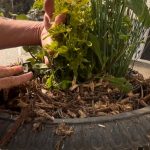Petunias are one of the most popular annual flowering plants, loved for their vibrant colours, hardiness, and ability to bloom throughout the summer.
Whether you’re an experienced gardener or just starting, this guide to growing and caring for Petunias will cover the following topics:
- Why Petunias Are Great Annual Flowers
- Choosing the Right Petunia Varieties for Your Garden
- 8 Creative Ways to Incorporate Petunias in Your Garden
- The Ideal Growing Conditions for Petunias
- Preparing the Soil for Petunias and How to Plant Petunias
- Watering and Fertilizing Petunias for Optimal Growth
So, let’s get started and explore the world of Petunias together!
Why Petunias Make Great Annual Flowers

Petunias, native to South America, are famous for their delicate, bright blooms and ease of growing in various conditions.
The Latin name for Petunia is Petunia, so we’re calling them right without trying!
Petunias come in a limitless selection of colours, available in shades of pink, purple, red, white, and even black.

Want the inside scoop on more gardening tips? Get early access to all my blogs and exclusive content by signing up for my newsletter!
Additional interest is created with bicolour combinations, intricate veining, speckles, contrasting throat colours, and double flower structures.
Being from the tropics, Petunias have a Plant Hardiness Zone rating of 10-11, so they are grown as annuals.
Related: What are Plant Hardiness Zones & How do They Work?
Despite being from warm environments, Petunias are quite hardy annuals. They can be successfully grown in various climates and soil types, making them accessible to gardeners of all backgrounds and experience levels.
Whether you have a sunny garden bed or limited space for containers, there’s a Petunia variety suitable for your specific needs.
In addition to their aesthetic appeal, Petunias are also known for their long blooming period. They provide a continuous display of vibrant flowers throughout the summer and into the fall, adding a splash of colour and charm to your outdoor oasis.
Choosing the Right Variety of Petunias for Your Garden
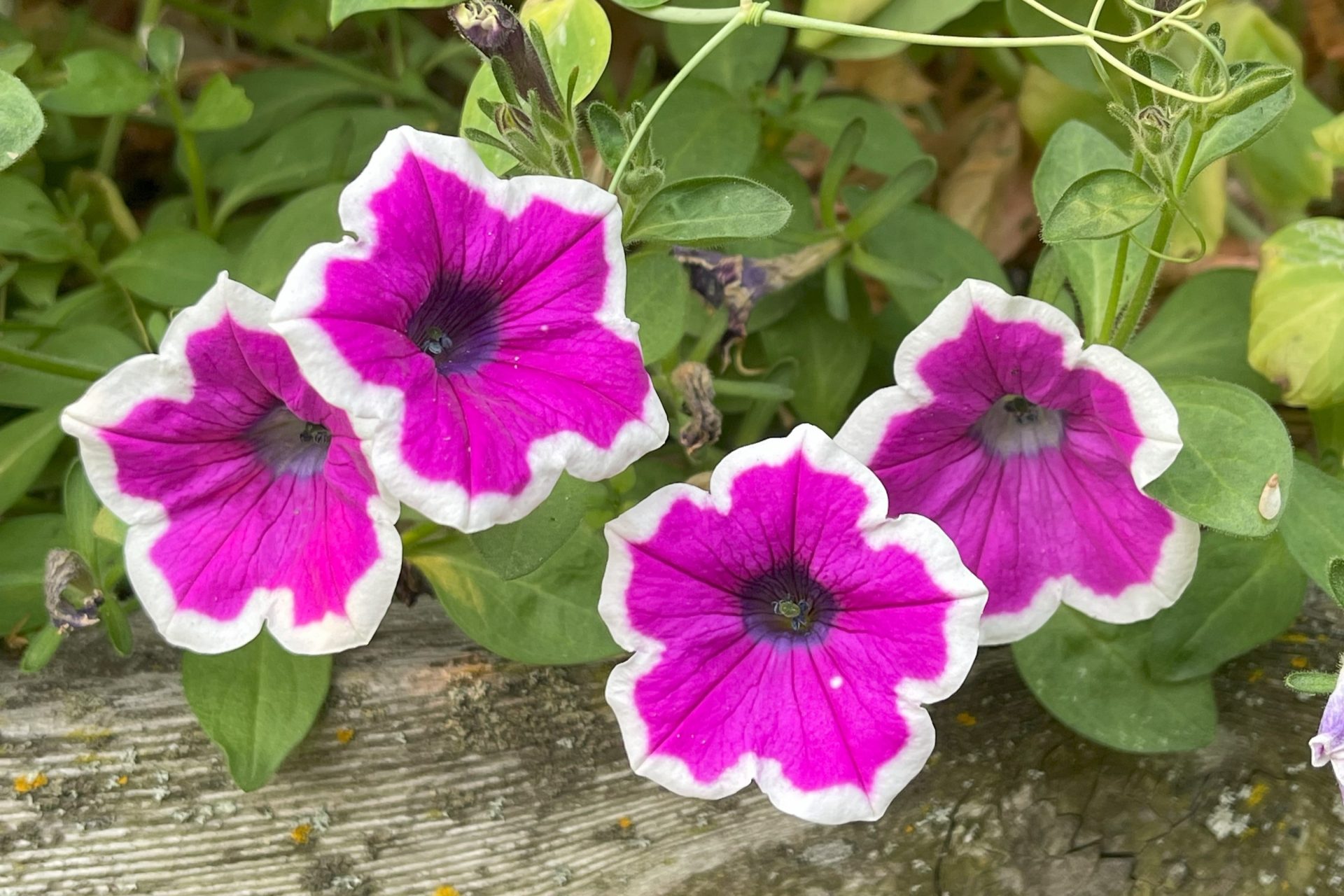
Selecting a suitable variety of Petunias for your needs helps to ensure a beautiful and thriving garden.
With the ease of hybridization, there are literally hundreds of different Petunia varieties, so choosing the right Petunia can be confusing.
Before selecting any Petunias for your project, know your garden design goals and environmental factors such as climate and available sunlight.
Regardless of growth habit, all Petunias are classified by blossom size and quantity, labelled as Grandiflora, Multiflora, Floribunda, and Milliflora, but they all have similar colour-producing power. Most of these types also have double and single-flowered varieties.
Briefly,
- Grandiflora Petunias produce the largest blossoms, but not as many as other types.
- Multiflora Petunias have slightly smaller blossoms but more on slightly smaller plants.
- Floribunda Petunias are a cross of grandiflora and multiflora types, resulting in a robust, hardy, stocky plant that produces multiple large to medium-sized flowers.
- Milliflora Petunias, like the Picobella series, sport petite single, trumpet-shaped 4 cm (1.5″) flowers on small, compact plants.
Some of the above varieties require deadheading, and others don’t, so check labels or ask questions for those details.
For simplicity, I break down the whole spectrum of Petunias into two basic growth habit categories: Upright and Trailing. I further divide Trailing Petunias into Wave and Vegetative subcategories.
The Best Uses for Upright Petunias
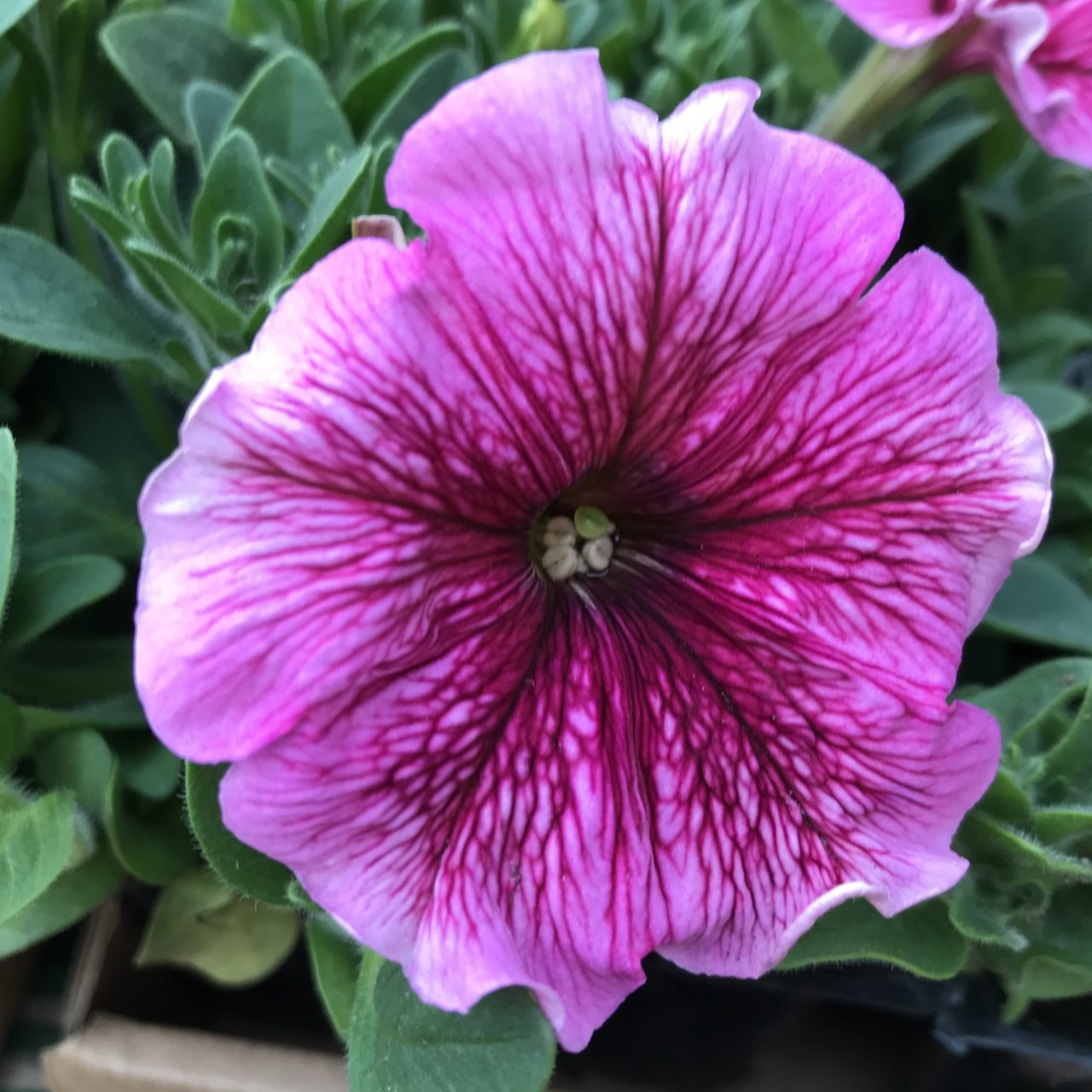
Upright, or mounding, Petunias grow into bushy mounds that reach heights of 20-30 cm (8-12″), which is variety dependent and can be found on individual labels.
Upright Petunias work well in flowerbeds, raised garden beds, and permanent planters as feature plants, fillers, and edging.
Petunia series with names like Ultra, Prism, Daddy, Dreams, Storm, Madness, Celebrity, and Hurrah are mostly upright growing Petunias.
You can also use upward-growing Petunias with shorter lengths in containers and hanging baskets for fillers. Watch them for necessary deadheading or pinching so they don’t get leggy.
Petunia varieties that work well in containers and hanging baskets as fillers include Crazytunias (slightly trailing), Supercascade (slightly trailing), Madness and Fantasy.
Where to Use Trailing Wave and Tidal Wave Petunias

Wave Petunias were the first trailing or spreading Petunias to come on the gardening scene in the 1990s.
They quickly became very popular as a ground cover and for hanging baskets and containers showing off 5cm (2″) wide flowers on long, vining, low growing stems that grew 1-1.25 m (3-4′) long with a height of 15 cm (6″).
Wave Petunias and Tidal Wave Petunias are particularly effective at covering large landscape areas with mass colour.
Wave Petunias grow from seed and are generally not recommended for container planting because of their aggressive growth habit.
If they are used in containers, their growth must be kept in check with pruning.
Examples of Wave Petunias include series names like Wave, Easy Wave, Tidal Wave Ramblin’, and Avalanche.
The Best Uses for Vegetative Trailing Petunias
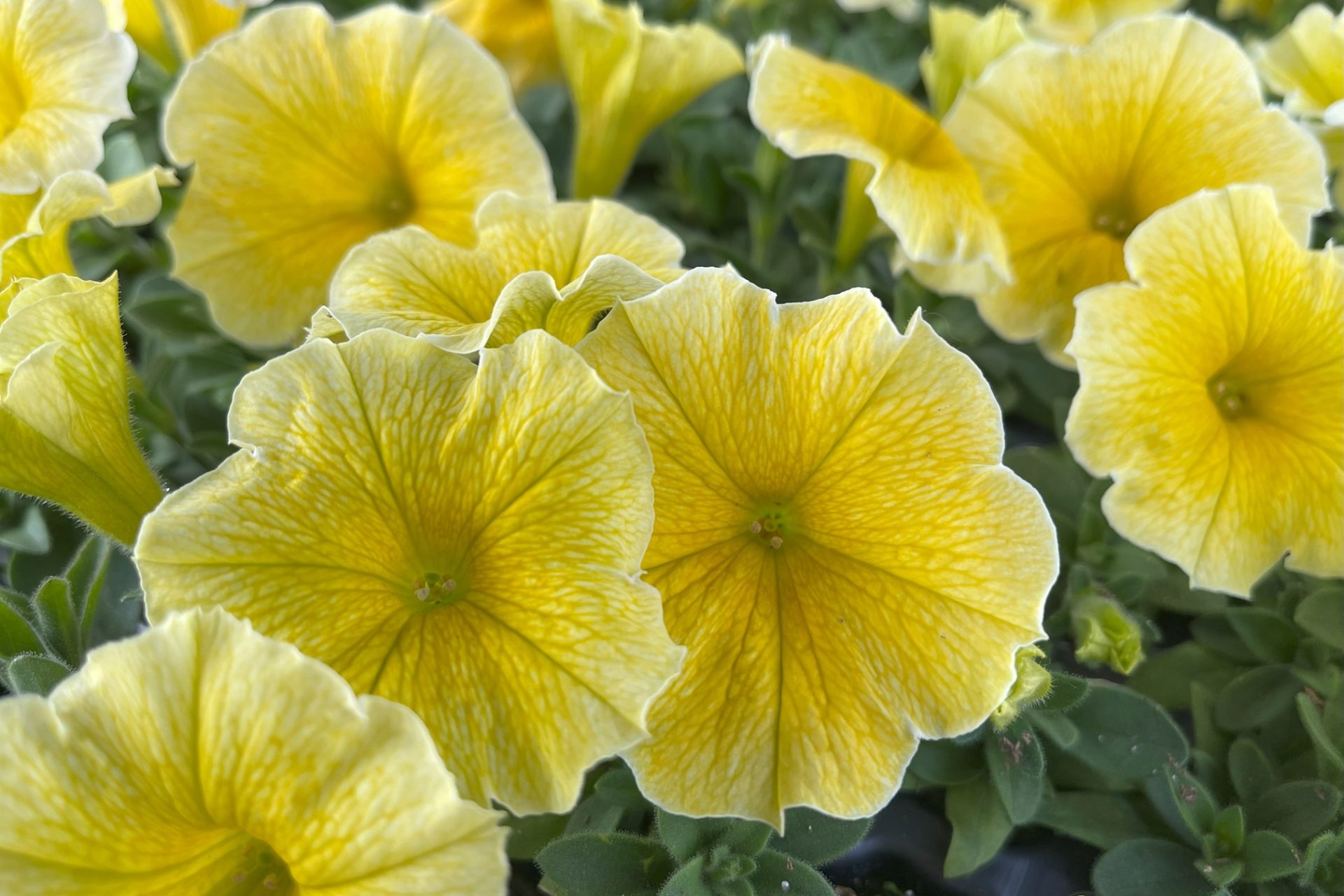
Vegetative Petunias are a group of Petunias that only grow from cuttings to stay true to their variety.
They have been hybridized for new colours, lush, mounding, and more dialed-in growth patterns than Wave Petunias, and they grow to lengths of 30-45 cm (12-18″).
Vegetative Petunias are propagated from cuttings and are stellar choices for containers, hanging baskets, and large planters, but they can also work well in flowerbeds.
Look for varieties like Surfinia (spread 20-30 cm, 8-12″), Cascadia (spread 30-45 cm, 12-18″), Blanket (spread 35-60 cm, 14-24″), Carpet (Milliflora, spread 30-91 cm, 12-36″), and Supertunias (spread 45-60cm, 18-24″).
Some varieties, like Surfinia, can tolerate a little more shade than others, and check if the variety you choose needs to be deadheaded.

Want the inside scoop on more gardening tips? Get early access to all my blogs and exclusive content by signing up for my newsletter!
8 Creative Ways to Incorporate Petunias in All Garden Types
When it comes to incorporating Petunias in your garden design, the possibilities are endless.
Here are some creative ways to make the most of Petunias in your garden:
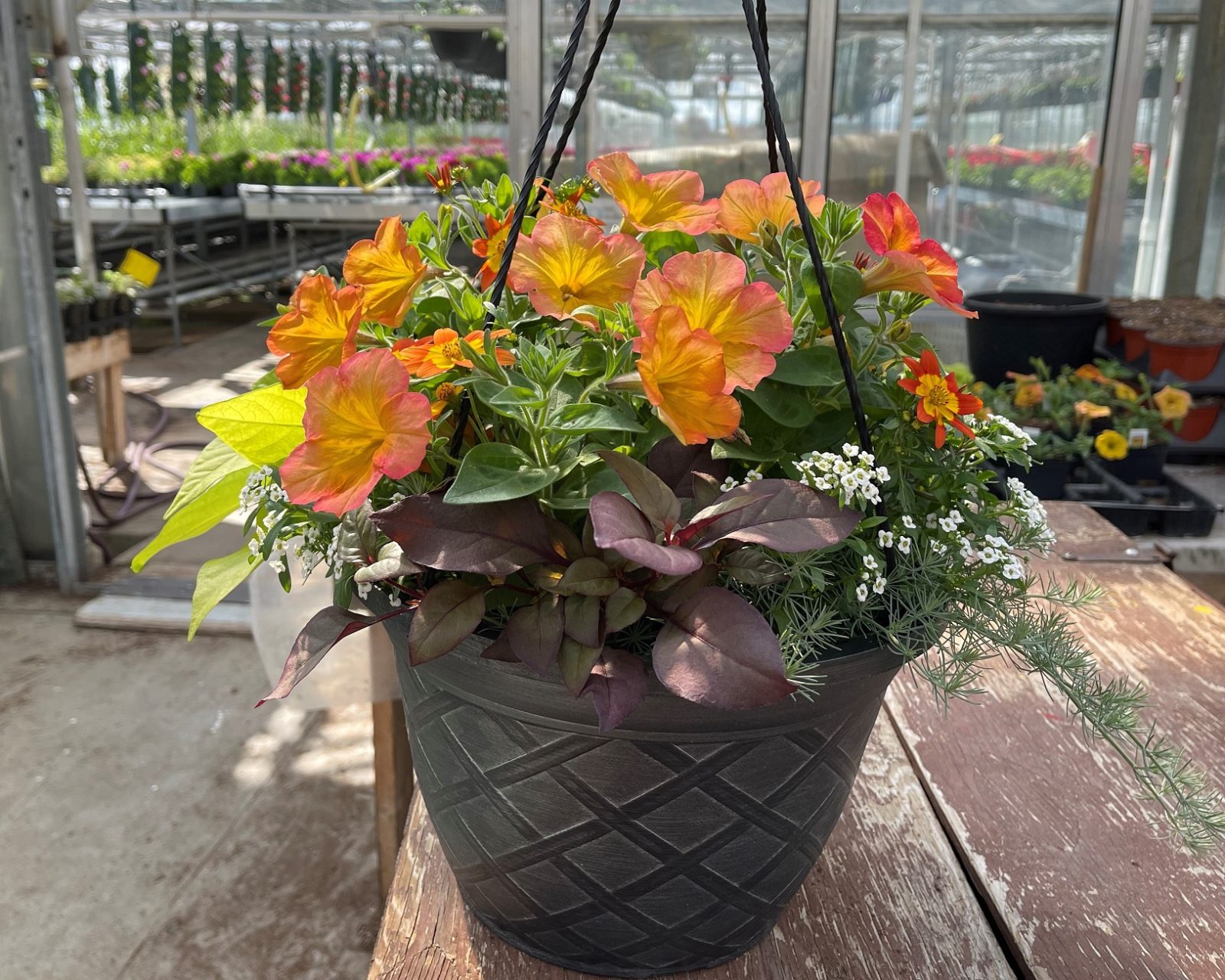
1. Hanging Baskets:
Place hanging baskets filled with cascading Petunias from your porch, patio, or pergola.
This creates a stunning visual display and maximizes space, making it perfect for smaller gardens.
2. Flower Borders & Edging: Create beautiful borders along pathways or around flower beds with Petunias. Mix different colours and varieties to add depth and create a dynamic visual impact.
Use Petunias to edge your garden beds or pathways. This provides a neat and defined border while adding a splash of colour to your overall garden design.
3. Window Boxes:
Install window boxes filled with Petunias outside your windows to add a burst of colour and create a charming, picturesque look.
This is an excellent option for those with limited garden space.

4. Container Gardens: Petunias thrive in containers, making them an ideal choice for container gardens.
You mix and match various sizes and types of containers to create an eye-catching display on your patio, balcony, or deck.
5. Vertical Gardens: Get creative by using Petunias in vertical gardens. Attach planters or pockets to a trellis or wall and fill them with Petunias for a stunning living wall effect.
6. Mixed Planters: Petunias play well with other plants that grow in similar growing conditions.
Combine Petunias with other annuals or perennials in mixed planters for a vibrant and harmonious display in containers, planters, raised beds, and window boxes.
Consider plants with different heights, textures, and colours to create a visually appealing arrangement.
Related: 6+ Front Door Planter Ideas to Make Your Entrance Shine

7. Petunia Pillars:
Create a picturesque scene of pillars adorned with cascading Petunias.
This is particularly effective in more extensive gardens or open spaces, adding a sense of grandeur, definition, and beauty.
Remember to consider the growth habits and specific needs of the Petunia varieties you choose to ensure they thrive in their designated spots.
With a bit of creativity and careful planning, Petunias can transform your garden into a stunning oasis of colour and charm.
The Ideal Growing Conditions for Petunias

Let’s talk about the ideal growing conditions to ensure your Petunias’ successful growth and flowering.
Petunias thrive in full sun, requiring at least 6 to 8 hours of direct sunlight daily. The more sun they get, the better they grow.
Petunias tend to turn pale, stretch, and bloom less in shady locations.
Petunias champion hot environments because of their tropical heritage; so if you have a challenging, toasty growing spot, Petunias would be a great fit.
In terms of soil, Petunias prefer well-draining and fertile soil.
Preparing the Soil for Petunias

Preparing the soil and planting Petunias is a step in ensuring these beautiful flowers’ successful growth and vibrant blooms.
Soil for In-ground Petunias
To create an optimal environment for your in-ground Petunias, follow these simple steps:
- Once a well-draining location that receives a daily dose of at least 6-8 hours of direct sunshine is selected, preparing the soil is the next task.
- Prepare the soil by removing any weeds, rocks, or debris.
- If the soil is hard, loosen it with a garden fork or tiller to improve aeration and drainage and add organic matter, such as compost or well-rotted manure, which is beneficial to improve its structure and nutrient content to provide a healthy foundation for Petunias to grow and flourish.
- I aim to get garden beds to a place where tilling is no longer necessary by regularly adding organic matter through mulching and adding compost in the fall.
Soil for Planters, Containers, and Hanging Baskets

Use fresh potting soil each spring for planters, containers, and hanging baskets that have a diameter of 55 cm (22″) or less.
For larger planters, replace the top 30 cm (12″) layer of soil with fresh potting soil.
Moisten the soil slightly before placing it in containers. This helps the soil absorb more moisture after the plants are put in place and it helps to reduce transplant shock.

Want the inside scoop on more gardening tips? Get early access to all my blogs and exclusive content by signing up for my newsletter!
How to Plant Petunias

Before planting Petunias in the ground or containers, consider their spacing requirements.
They may require spacing between 15-45 cm (6-18″) apart, which is variety dependent.
Follow the guidelines provided on the plant tags or seed packets to ensure proper spacing:
- Dig a hole slightly larger than the root ball of the Petunia plant.
- Gently remove the plant from its container.
- Loosen the roots a little to encourage root development.
- Gently place the root ball in the hole. Ensure that the top of the root ball is level with or slightly above the soil surface.
- Backfill the hole with soil, gently pressing it down to eliminate air pockets.
- After planting, water the in the Petunias thoroughly to help settle the soil around the roots.
- Mulch around the base of the Petunia to reduce weed growth and to help maintain soil moisture.
Related: What is Mulch? Making Garden Magic with Mulch
How to Water and Fertilize Petunias for Optimal Growth

Watering and fertilizing are aspects of caring for Petunias that ensure optimal growth and stunning beauty.
Watering Petunias
First, let’s talk about watering.
Petunias prefer consistently moist soil but can be prone to root rot if overwatered. The key is to strike a balance.
A good rule of thumb is to water Petunias deeply once the top 5 cm (2″) of soil feels dry. This allows water to penetrate the root zone and encourages healthy root development.
Insert the length of your index finger to check the soil hydration before watering, and when the dryness is felt at the second knuckle, it’s time to water.
Avoid frequent, shallow watering as it can lead to weak roots and disease susceptibility.
When watering Petunias, it’s best to aim the water at the soil at the base of the plant rather than wetting the foliage.
Wet leaves can invite fungal diseases, so try to direct the water to the base of the plant. A soaker hose or drip irrigation system can effectively provide a slow and steady water supply directly to the roots.
Fertilizing Petunias
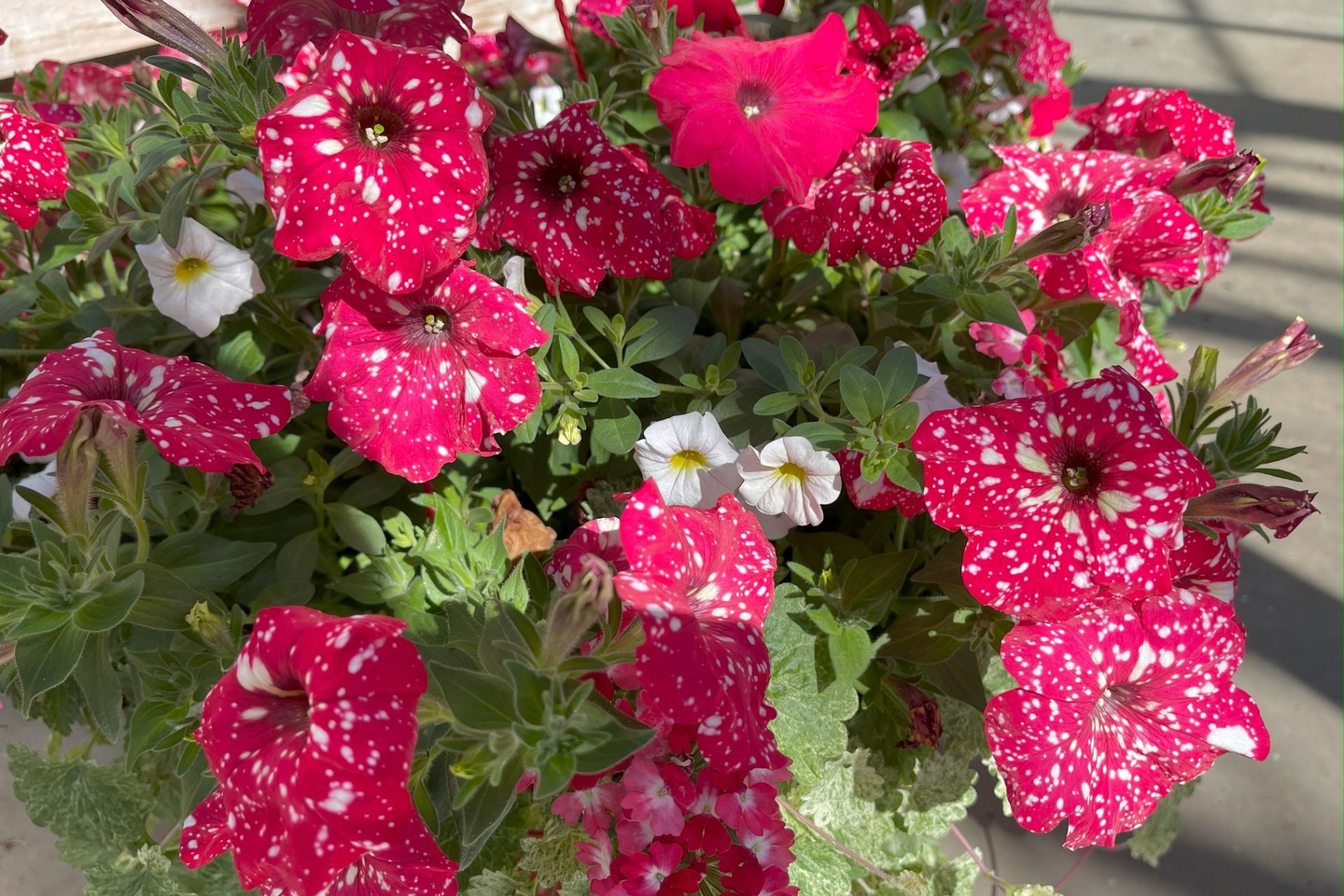
Now, let’s move on to fertilizing.
Petunias are heavy feeders and benefit from regular fertilization throughout the growing season.
Apply a liquid fertilizer weekly to promote vigorous growth and abundant blooms.
Look for a balanced fertilizer with equal ratios of nitrogen (N), phosphorus (P), and potassium (K), like 20-20-20. Other good fertilizers are Nature’s Source and 13-30-15.
Balanced fertilizers provide the necessary nutrients for overall plant health, strong root development, and vibrant flowers.
Incorporating a slow-release granular fertilizer into the soil mix before planting is helpful, too. This provides a steady supply of nutrients over time.
Follow the manufacturer’s instructions for properly diluting and applying the chosen fertilizer. Over-fertilization can lead to excessive foliage growth at the expense of blooms.
Related: For more on fertilizer, How to Understand Fertilizer Labels, and What is the Best Way to Fertilize Plants?
In conclusion, watering and fertilizing petunias are essential for their optimal growth and beauty.
By providing adequate moisture and a balanced supply of nutrients, you can ensure that your petunias thrive and reward you with a breathtaking display of colourful blooms.
How to Prune and Deadhead Petunias to Encourage Continuous Blooming
Pruning and deadheading Petunias are other tasks for encouraging continuous blooming and maintaining these vibrant flowers’ overall health and beauty.
By following these simple tips, you can ensure that your petunias stay in full bloom throughout the growing season.
1. Regular Deadheading for Petunias
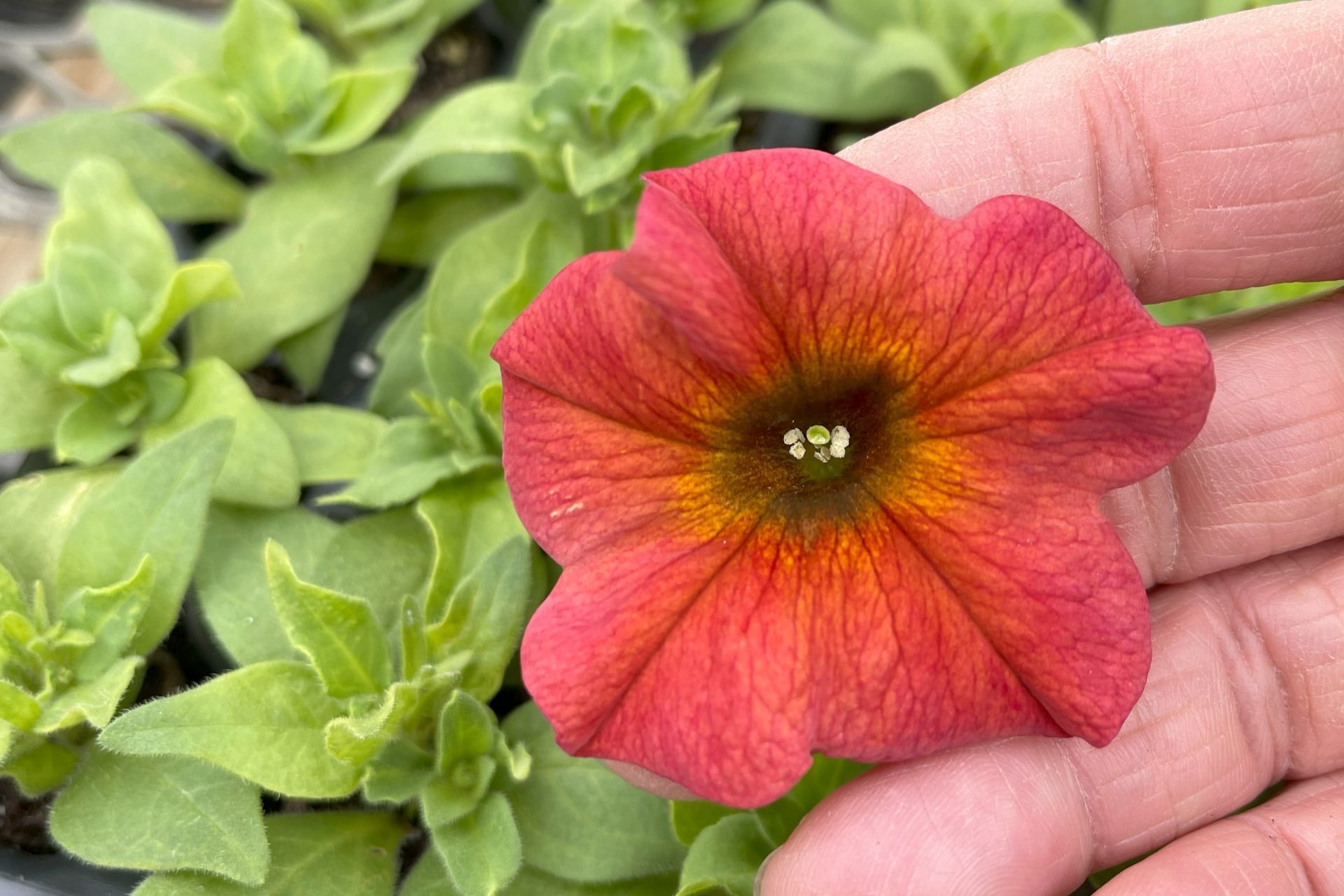
Deadheading refers to the process of removing faded or spent flowers.
This encourages the plant to redirect its energy towards producing new blooms instead of seeds.
To deadhead Petunias, simply pinch or snip off the faded flowers just above a set of healthy leaves or buds.
This will promote new growth and keep your Petunias looking tidy.
Some Petunias, like Supertunias, don’t need to be deadheaded, so check the details on the specific variety you are growing.
2. Don’t be Afraid to Prune Petunias

Pruning involves cutting back the plant to a certain extent to shape its growth and encourage branching.
Some Petunias, particularly Wave Petunias, tend to become leggy if left unpruned, resulting in fewer flowers.
To prune Petunias, cut the stems back using clean and sharp pruning shears at the nodes where the leaves emerge from the stems to remove about one-third of the plant’s height.
Focus on cutting back the long, rambling stems, ensuring you leave a good amount of healthy foliage intact. Removing too much of the plant will compromise its ability to photosynthesize and produce nutrients.
This will stimulate new growth and create a compact, bushy plant.
3. Deadheading and Pruning Timing Matters
It’s important to correctly time your pruning and deadheading to avoid interrupting the blooming cycle.
Not all Petunias require deadheading, so check labels for information.
Aim to deadhead your Petunias whenever you notice faded flowers, ideally before they have a chance to produce seeds.
As for pruning, it’s best to do it in early summer or after the first flush of flowers has finished. This allows the plant to recover and produce new growth, resulting in another round of beautiful blooms later in the season.
Related: How to Keep Hanging Baskets and Containers Thriving All Season
Common Pests and Diseases that Affect Petunias
Petunias are beloved for their vibrant colours and delicate blooms, but just like any other plant, they can fall victim to pests and diseases.
Petunias are affected most often by aphids and a couple of fungal diseases.
1. Aphids
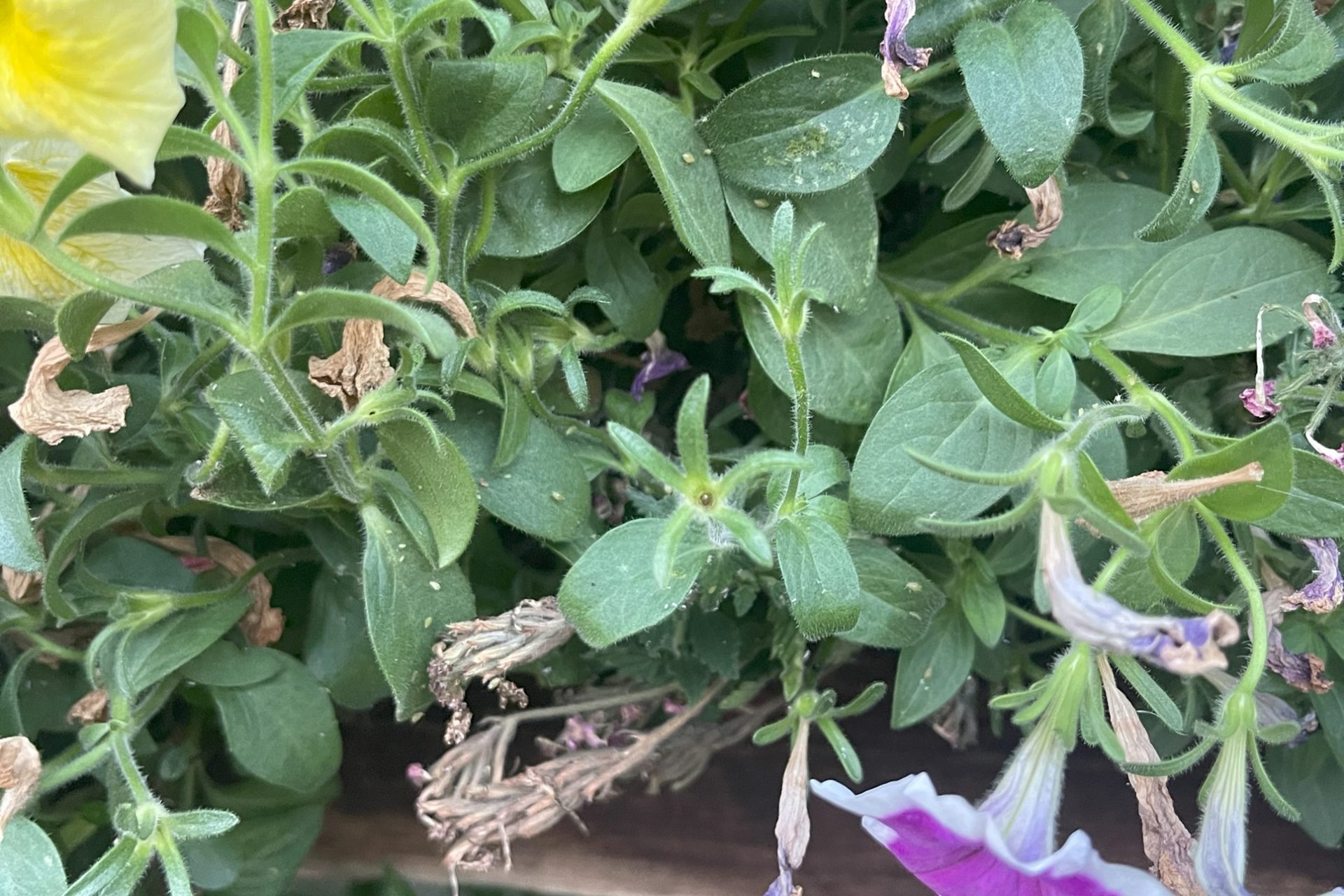
The most common pest that affects Petunias is aphids. Aphids LOVE Petunias.
These small, sap-sucking insects can quickly infest your plants, causing stunted growth and distorted leaves.
To combat aphids, my first go-to solution is to blast them off with a strong water spray. It sounds too simple, but very effective, as aphids have difficulty finding their way back to the plants.
You can also use insecticidal soap, which effectively controls these pesky bugs.
Regularly inspect your plants for signs of aphids to catch them early and promptly treat them to help prevent further damage.
2. Fungal Diseases

In addition to pests, Petunias are also susceptible to various diseases, most commonly, fungal infections like powdery mildew.
These diseases can cause discolouration, wilting, and even death of the plants if left untreated.
To prevent fungal infections, avoid overwatering and wetting the foliage to ensure proper air circulation in and around the Petunias.
If you notice any signs of disease, promptly remove and dispose of the affected plant parts to prevent further spread.
Regularly monitoring your Petunias for pests and diseases promotes healthy growth and longevity, and taking appropriate measures will help to ensure that your Petunias remain beautiful and vibrant throughout the growing season.
Enjoy Petunias all Season Long!
Petunias are a popular choice for adding vibrant colours to your garden or patio and armed with knowledge and care strategies; you can enjoy their beauty for the entire gardening season.
So grab your gardening tools, prepare the soil, and get ready to watch your Petunias flourish and bring joy to your outdoor space.
Happy gardening!
Photo Credit: Many photos included in this blog were taken at Thiel’s Greenhouses, in Bruderheim, Alberta, Canada with permission.
Other Annual Growing Tips
Tips for Starting Plants from Seed
©Sharon Wallish Murphy ©Gardening with Sharon





